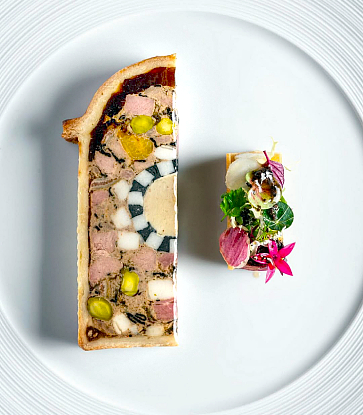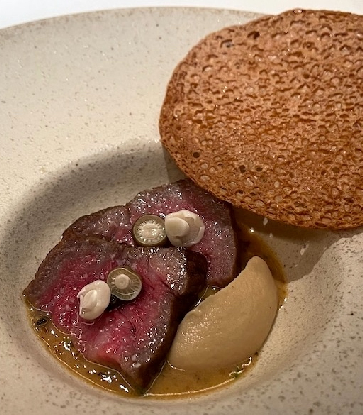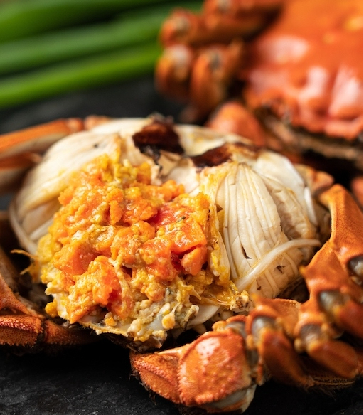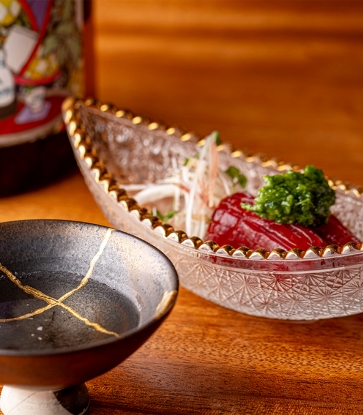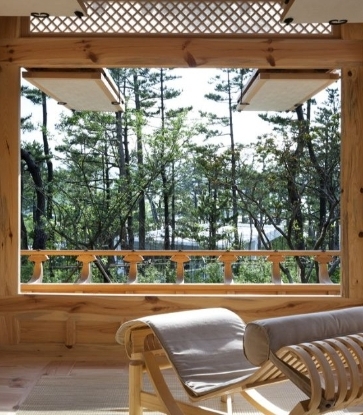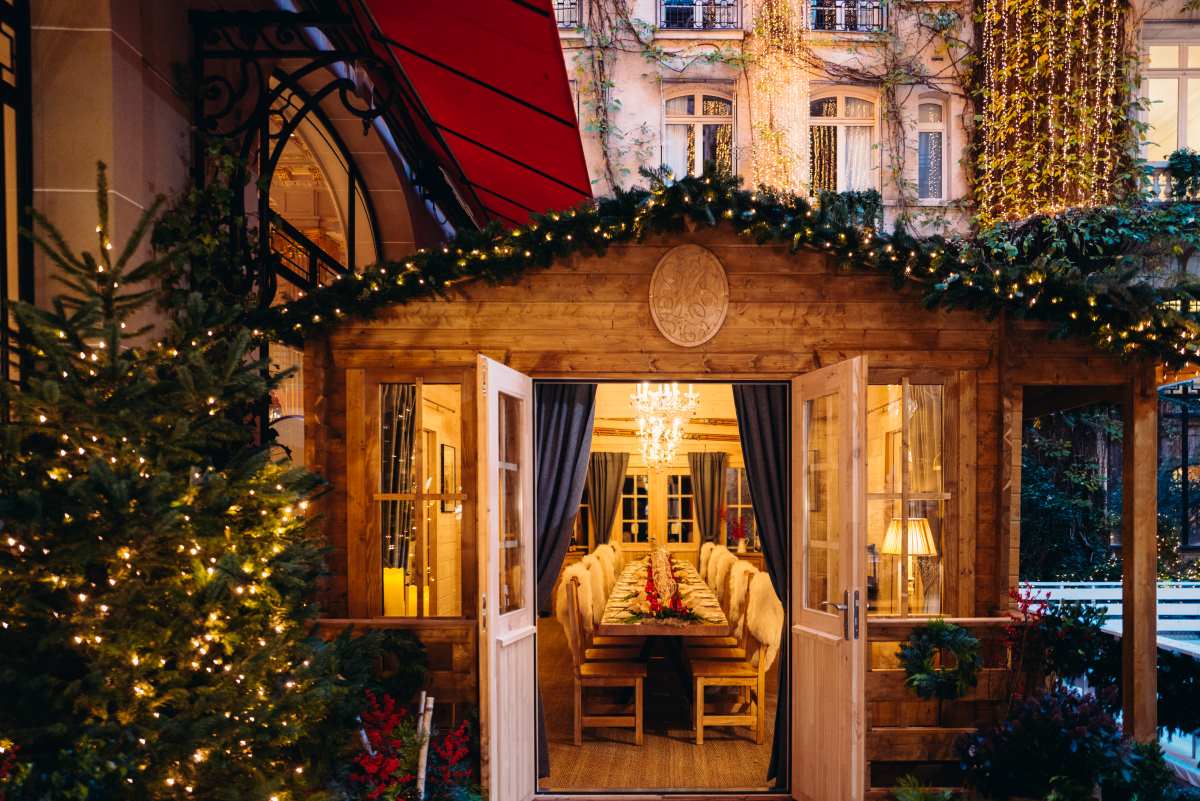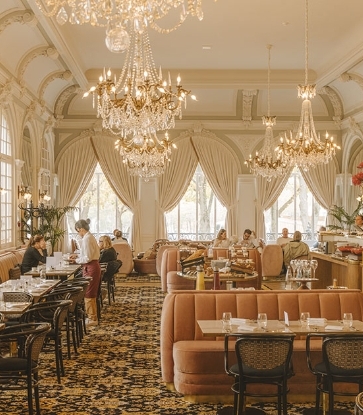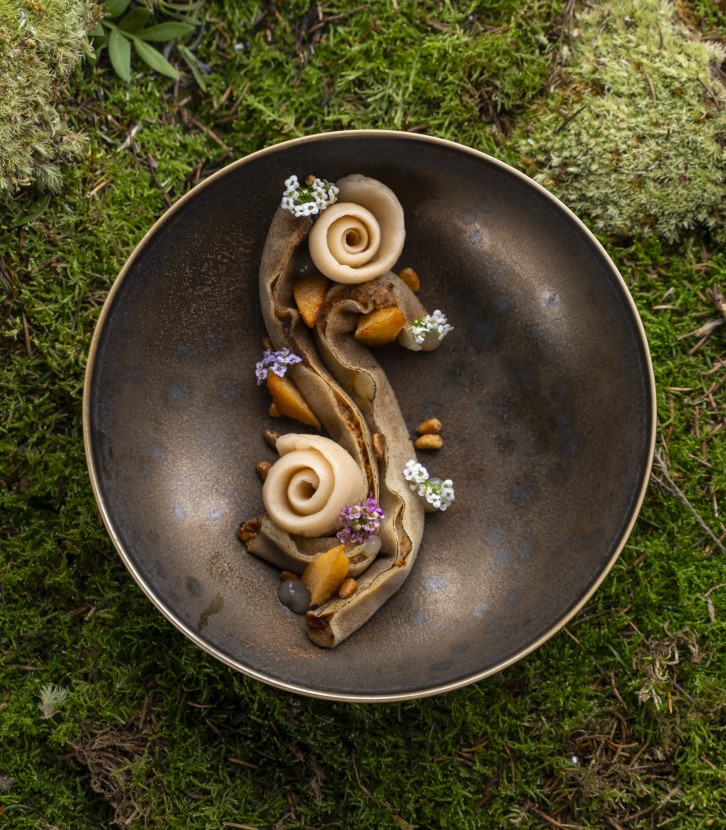We are pleased to share the new additions to the MICHELIN Guides to Tokyo, Kyoto and Osaka, ahead of the annual launch ceremonies when the MICHELIN Stars, Bib Gourmands and MICHELIN Green Stars will be unveiled.
The following restaurants were previously announced between March 2023 and March 2024.
March 2024
Kyoto
Raiz
ContemporaryThe message is the delicious flavour of freshly picked vegetables. Raiz partners with some farmers in Kyoto to deliver the aroma and vibrancy of freshly harvested produce.

YOKOI
JapaneseClasping to heart his father’s maxim that ‘cooking is self-expression’, he expresses himself through goma-ae made with freshly roasted, freshly ground sesame.

Saketosakana DNA
Izakaya‘DNA’ was appended to the name to evoke the richness of Japanese cuisine and the spirit of Japan as defining features of the restaurant. There’s a reason why the soup using kombu kelp and bonito dashi stock takes pride of place.

sonoba
SobaTwo friends from an arts university started sonoba as ‘a soba shop that makes pottery’. Having majored in interior design, the chef was involved in the restaurant’s design and construction.

Kamoryori Tabuchi
Duck SpecialitiesThis restaurant specialises in duck cuisine and buys ducks whole, so it can serve a wide variety of cuts.

Gion Yamagishi
JapaneseIn a bid to make Japanese cuisine approachable, in addition to an omakase set meal, à la carte ordering is also available. The staff take care to provide a comfortable dining experience.

Hirosawa
ChineseCreative Chinese cuisine with the ambience of a Japanese villa. The restaurant is a forum for chef's self-expression, so he named it after himself.

Doppo
JapaneseThe chef was deeply impressed by Rosanjin Kitaoji epicure’s pursuit of beauty in all its manifestations. Seasonal furnishings in ceremonial spaces, a lovingly tended garden and antique dinnerware speak of his devotion to Japanese culture.

Mizuno
JapaneseMizuno is ‘a shop with good food’ but also a restaurant that never forgets the classics. Yuan’yaki, a grilled fish dish dreamed up by a tea ceremony master includes ginger and onions as ‘secret ingredients’.

Osaka
LES SOUVENIRS
FrenchDetermined to create food that leaves a lasting impression, the chef selects ingredients with an exacting eye, then lets his imagination run wild. Combinations of Western and Japanese flavours are unique.

Washun Taiki
JapaneseThe name ‘Washun’ means ‘complementing the seasons’. The purport here is to bring together ingredients that draw out each other’s goodness, using proper techniques but with splashes of creativity.

Oudon Yomogi
UdonThis à la carte udon shop is a project of the proprietress of the Japanese restaurant Miyamoto.

Oryori Matsumura
JapaneseA menu only a chef who honed his craft in Kyoto, Osaka and Paris could conjure. By bringing together the aesthetic senses of disparate locations, Oryori Matsumura has created a cuisine that is refreshingly original.

Le Logis h
FrenchThe chef’s attention focuses on spices, herbs and fruit. These are used freely in everything from appetisers to dessert.

Kinari
JapaneseKinari means ‘simple, unvarnished, in its natural state’. The owner-chef strives as far as possible not to season his dishes, letting the ingredients do the talking.

February 2024
Kyoto
MASHIRO
ContemporaryAfter Ashiya and Gion, the new frontier for Hiroyuki Koshimo is Karasuma. The shop’s previous name, ‘Roiro’, meant ‘Black as Lacquer’, so Koshimo changed it to ‘Pure White’ to set a different tone.

TOKI
ContemporaryFood born of experience with French cuisine and the famous waters of Kyoto. As if to symbolise Kyoto, the ‘city of waters’, the prix fixe starts with hot water drawn from a spring.

MOKO
FrenchThough the chef moved to reside in Kyoto, his native language, culture and ingredients are all foreign to the area. It all began when, feeling disheartened, he encountered food producers at Ohara who reignited his ambition.

Nijo Minami
JapaneseThe chef honed his craft at a kappo in Gion for a quarter of a century. His favourite saying, passed down to him from that time, is “kindness, freshness, feeling”.

la bûche
FrenchShohei Mori opened a restaurant in Ohara as his hometown. The stars of his gustatory show are vegetables, both farmed and wild, river fish, game, and more of the bounty there.

Niomon MUI
JapaneseTo encourage patrons to trust him, he run a customer-first restaurant, in true kappo style. ‘Mui’ in the shop’s name means ‘no contrivances, everything natural’. It’s fun to leave everything to the master and go with the flow.

Osaka
Tosara
ContemporaryThe chef's hometown roots in Awajishima and the appeal of his producers in the form of a ten-plate prix fixe.Cuisine born of solidarity with region tells the story of this chef’s life.

macua
FrenchChef Daisuke Nakayama derives his creative inspiration from picturing the smiles of his guests. Rossini burgers borrow from the classic fare of beef with foie gras.

ricuperare TAKEUCHI
ItalianWood, charcoal and straw all fuel the cooking flames at this trattoria. For expamle, duck and bonito, straw is burned for its fragrance.

Sui Okazaki
JapaneseThe chef preserves the forms of traditional multi-course meals while expressing his own imagination. Experience in Kyoto cuisine shines in soup stock of ma-kombu and Rishiri kombu.

Claro
SpanishThe chef creates modern Spanish fare with Japanese ingredients. The all-black interior is stylishly appointed with modern art.

Sawada
JapaneseWith a spirit of gratitude, Toshimitsu Sawada explains his menu like a storyteller. He pours his soul into his work, creating food to satisfy hearts as well as stomachs.

xiang hua
ChineseTrue to its name, which means ‘serving the cuisine of every region of China’. Tour the regional cuisines of China and taste its many fascinating flavours.

LOUISE
FrenchThe chef co-stars with the sommelier. The counter, where you can chat with staff and enjoy the delicious aromas wafting from the kitchen, offers the best seats in the house."

Yiwanshui
ChineseKeen to become the customers’ habitual haunt, Yiwanshui serves Chinese home cooking. The approach here is to use familiar ingredients and take the time and effort to bring their native goodness to the fore.

January 2024
Kyoto
Jean-Georges at The Shinmonzen
FrenchGlobetrotting restaurateur Jean-Georges Vongerichten’s place at The Shinmonzen in Gion interprets his famous New York recipes through local ingredients.

SATOWA
JapaneseSATOWA was opened as a new style of kappo under the theme of "kappo and modern architecture". The orthodoxy of the cuisine provides reassurance.

Komatsu Cucina Italiana
ItalianThe key to owner-chef's recipes is texture. He searches for compatibilities among ingredients to draw out the aromas of each season. The two-course pasta menus are where his creativity shines.

Hakuzan
JapaneseThe chef moved his restaurant from Tokyo’s Ginza to Kyoto because he wanted to pursue his craft amid the changing pulse of nature. He labours over every detail of his appetiser platters to perfectly convey the mood of each season.

Okuniya Mambei
Freshwater EelThe chef opened Okuniya Mambei as the third-generation owner-chef of a river-fish restaurant in Nishiki Market. The menu consists only of large kabayaki on rice. Eel is grilled with the fat intact and served with rice freshly cooked in an earthenware pot.

Le cadeau
FrenchThe chef prizes combinations of familiar fare, such as apples paired with boudin noir sausages snf navy beans with bacon, and so on.

Nominokoji Yamagishi
IzakayaThe name Nominokoji, ‘drinker’s alley’, is a play on Tominokoji, the pub that is this eatery’s parent. Enjoy the cuisine with a playful spirit, accompanied by delicious spirits.Enjoy the cuisine with a playful spirit, accompanied by delicious spirits.


Ryo Kawashima
JapaneseEnvisaging the eatery as an intimate gathering with a host and guests, the chef laid it out with no boundary between counter seating and kitchen. His cuisine is constantly invented and improved for the guests.

Osaka
Kassen Iritani
JapaneseThe focus is on live seafood dishes, as the restaurant name ‘Kassen’ (‘sliced fresh’) suggests.In the omakase set meal service, the chef flexes the skills and ingenuity, responding nimbly to individual customer preferences.

Yakitori Matsuoka
YakitoriCuisine rich with the fertile imagination of expressing a spirit of relentless curiosity. The menu intersperses skewers with chicken items such as stewed liver and cutlets.

Matsuzushi
SushiMatsuzushi has been in business for over half a century. Its second and present owner-chef used the opportunity of the handover from the previous owner to study sushi in detail. The first item served is seafood in season.

OIMATSU Tempura Suzuki
TempuraThe tempura here shows an awareness of the start and end of each ingredient’s season, reflecting the chef’s experience in Japanese cuisine. Thinly battered items are lightly fried in safflower oil to convey their flavour plainly and honestly.

Shokudo Tanoshi
IzakayaThe down-to-earth name, ‘Shokudo’ or ‘cafeteria’, was chosen because the restaurant aims to be one where people can drop in casually, while ‘Tanoshi’ (from tanoshii, ‘fun’) reflects the fun atmosphere created by the owner, who handles service, and the chef.

Oku
Freshwater EelThe theme is ‘unagi and sake’, so the fare is the unagi set menu only. Ingredients are boiled, fried or straw-smoked for an original sensibility.

December 2023
Kyoto
Pontocho Sushi Ishiya
SushiPontocho Sushi Ishiya caters to customers’ desires by offering sushi and dishes that can be enjoyed à la carte. The extensive menu amply fulfils the shop’s role as a counter-style restaurant serving traditional cuisine.

Muromachi Yui
Japanese‘Yui’ means ‘one and only’, and indeed the meals to be savoured in this elegant dining room are to be found nowhere else. His goal is a one-of-a-kind restaurant that truly conveys his culinary feelings.
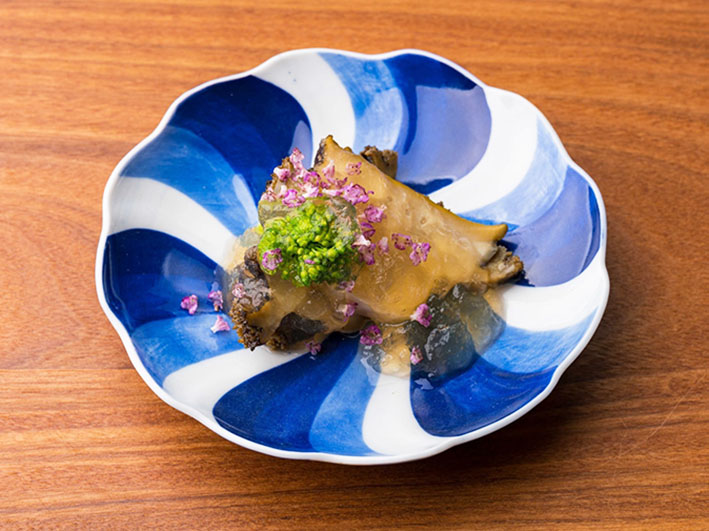
Yakitori Kyoto Tachibana
YakitoriTomonori Sakata turned his attention from Japanese cuisine to yakitori when he fell in love with Kyotamba chicken. Unique inspirations from Japanese cuisine include chicken meat marinated in kombu broth and chicken meatballs mixed with takikomi-gohan.

Senda
JapaneseAt dinner the pièce de resistance is the elegant appetiser. The eel kabayaki, basted with sauce from the family recipe before broiling, is not to be missed.

L’aparté
FrenchUsing Japanese ingredients and French methods, Bâcle conjures an eclectic blend of both cuisines, creating harmony with numerous ingredients such as bean-curd skin, miso and nori seaweed.

Higashiyama Tsukasa
JapaneseTsukasa Miyashita’s menu is the product of guidance from two mentors. Inspired by these two lessons as Ryotei and Kappo, Miyashita puts his own unique stamp on Japanese cuisine. A dialogue between tradition and avant-garde.

Kyo Ajiwa
JapaneseAmid the teahouses lining the streets of Miyagawacho stands this counter-style restaurant. The entrance is decorated with the uchiwa fans from geisha and maiko, expressing the charm and brilliant colour of the geisha quarter.

Osaka
anu
ItalianChef and kitchen team are united in creating dishes that fulfil the potential of their ingredients. The appeal of each dish is enhanced with stories about their producing regions and encounters with their producers.

Koryu Keishin
JapaneseIn classic Naniwa (Osaka) counter-restaurant style, Koryu Keishin offers a menu running to over 70 items, mostly à la carte. Char-grilled seafood from Osaka Bay and Kawachi duck are a delight. This sister shop of Koryu is on a quest for ‘the new flavours of Naniwa’.

Sushidokoro Kurosugi Shinkan
SushiThe focus is on à la carte out of a desire to be customers’ regular haunt. ‘Shinkan’ in the name means, very roughly, ‘pouring my heart into every morsel of sushi’.

Otsuki
JapaneseWhat Masakazu Nishiguchi pays attention to are creativity and a sense of season. He wants to make an impression, sometimes interweaving a well-balanced twist or two. With the first of each harvest, he avoids ostentation, preferring honest expression of inherent flavours.

Kitashinchi Yumiba Shinnosuke
JapaneseThe owner-chef prizes nothing more than the temperature and aroma of his cooking. All dishes are prepared and served fresh, so counter seating is arranged around the preparation surface.

November 2023
Tokyo
Piao-Xiang
ChineseChilli peppers were first introduced there four centuries ago, but Piao-Xiang weaves a tale of history, reaching back for the good old cooking of Sichuan before chilli peppers and adding a few enhancements.

KOTARO Hasegawa DOWNTOWN CUISINE
FrenchThe name ‘Downtown Cuisine’ reflects his desire to win the favour of the chef's native Tokyo shitamachi, or ‘downtown’. From Satake Shopping Street, a new French cuisine is announcing itself to the world.

Hiroo Ishizaka
SushiHiroo Ishizaka offers a distinctive flair while ensuring reliable quality. The meal begins with moderately fatty, sweet flesh of tuna sushi, followed by sea urchin wrapped in nori as a way to compare flavours.

Shunka Nakamura
ChineseAfter going to Hong Kong to study Cantonese cuisine, the chef then worked at a kappo to learn about Japanese food. He calls the marriage of these two shunka, which roughly translates as ‘Chinese food with a seasonal sensibility’. Spring rolls of pike conger or conger eel are one example.

Miyake Akira
JapaneseThe Gifu Prefecture–born owner-chef uses his restaurant to showcase the crafts and foodstuffs of his native region. Born to a family that runs a pottery studio in Tajimi, he serves his dishes on Mino-ware vessels he made himself.

commedia
ItalianAfter starting with cured ham and salami, a succession of homemade pasta dishes follows. Their desire to bring joy to customers comes through naturally from their cuisine.

Merachi
ItalianThe name means ‘creation of an artisan, pouring in heart and soul’. It was chosen to express thanks to his food producers, who grow his ingredients with care and effort.

L'ÉTERRE
FrenchL’Éterre was opened by Yoshiaki Ito, chef of L’Archeste in Paris’ 16th arrondissement. The classic fare is prepared with traditional techniques, making artful use of firewood, charcoal and straw to draw out the purity of the ingredients.

Kyoto
Wakasugi
JapaneseClose to the World Heritage site of Kinkaku-ji Temple, a husband and wife who loved this location opened a counter-style restaurant serving traditional cuisine. Eager to add to the vitality of the region, they aimed to create an eatery where neighbours could gather; more than a Japanese-style pub, but nothing as fancy as a high-class kappo restaurant.

Osaka
UPSTAIRZ
FrenchAll-day dining supervised by the chef of Craftale in Tokyo. With each dish, the chef aims to raise the bar a notch or two, hence the name ‘Upstairz’.

October 2023
Osaka
Le progrès
FrenchThe kaiseki-style menu reflects the fusion of Japanese and French cultural influences, as do Japanese ingredients such as pike conger and milt. Le Progrès is a restaurant that ‘progresses’ through the passion of both the chef and sommelier.

Kyoto
Kappo Shinatomi
JapaneseMenus are determined by customers’ preferences and how the chef feels that day. Sweets are prepared by the lady of the house. The couple’s personality is stamped on the ambience of this kappo restaurant.

Tokyo
Mētis Roppongi
FrenchThis French restaurant with counter service exemplifies ‘Wakon Yosai’ - ‘Japanese spirit with Western learning’. The chef works with the skills he honed in Paris to fashion a harmonious blend of French cuisine with Japanese ingredients and wood-fire cooking.

Waki Shun
JapaneseThe chef wants is to convey is the power and vigour of ingredients in season. Pride of place on the menu goes to char-grilled items. He works the flame with constant minute adjustments, aiming for the precise moment when the flavour of fresh-caught fish and wagyu beef is fully revealed.

Il Ristorante - Niko Romito
ItalianContemporary dining in the Bulgari style. Simple yet richly flavourful dishes deliver authentic Italian tastes.

Aoyama Ototo
JapaneseChar-grilled fish and rice cooked in an iron pot are the mainstays here. In lunch, fish set menu is popular. In the evening, guests can choose from a selection of meats and vegetables to grill.

MATSUKI
FrenchThe husband-and-wife team of chefs make you feel at home. Enjoy the unpretentious meal like you would taste at the countryside with one of their select organic wines.

Fugu Club miyawaki Bettei
PufferfishThe chef is taking fugu (blowfish) cuisine to a new level. One good example is thick-cut sashimi dressed with caviar and olive oil. Western ingredients and oils are added to good effect.

Oryori Horiuchi
JapaneseThe chef nurtures relations with food producers nationwide who share her vision. The dishes are prepared with a spirit of gratitude for ingredients from land and sea.

Ginza Kitagawa
JapaneseA sister establishment of Ginza Shinohara, Ginza Kitagawa was opened to explore the subtleties of Japanese cuisine. A crew of young cooks combine knowledge and skill to proclaim a new Japanese cuisine.

September 2023
Tokyo
Kabi
InnovativeThe chef studyed the wonders of fermentation in Denmark. From a foundation of miso, pickles and other fermented products, he dreams up an assortment of creative dishes.

Takahashi
JapaneseAfter studying kaiseki cuisine in Japan, the chef moved to Singapore. He acquired hospitality skills from his experience overseas. Both qualities reveal themselves in his fare and service.

L'eclaireur
FrenchSmoking by skilful tending of flame is the key to the chef's presentation of creative French cuisine. Honing his creativity since his trainning days, an experience that led him to where he is today.

HOPPERS
Sri LankanThe chef uses Japanese ingredients to express a seasonality that Sri Lanka lacks. Guests tasting them is sure to feel a touch of refinement along with love for their native land.

Ginza Yondaime TAKAHASHIYA
Freshwater EelThis restaurant was founded in Sugito, Saitama Prefecture in 1873.The fourth proprietor, fulfilled a dream by hanging out his shingle in Ginza. Eel is freshly cut, steamed and grilled to achieve a tender texture, in the Kanto style.
HASUO
KoreanThe fare here is New Korean: traditional Korean cooking with a modern interpretation.Ganjang-gejang, sauce-marinated blue crab, is marinated lightly to suit modern tastes.

Shintomicho Yuasa
ChineseThe chef puts great store by the principles of a balanced diet and good food for good health, creates dishes he hopes will support his patrons’ health in both body and soul.

OLD NEPAL
NepaliThe restaurant’s name is a shout out to the culinary culture of Nepal in the good old days. The chef spins a tale on the theme of a journey, based on his own experiences.

Kyoto
Miyawaki
JapaneseThe menu has a drinking snacks vibe. Regional sake, wasanbon (a kind of refined sugar) and olive-fed wagyu beef are sourced from Kagawa Prefecture from the chef’s desire to support his native region.

August 2023
Kyoto
Luca
FrenchChef Takuya Kuwabara strives to create fare based on the classic French cuisine which so impressed him during his apprenticeship, while keeping the flavours light. Food is served colourfully garnished with vegetables of Kyoto in season.

Osaka
Le Nez
FrenchHideyo Dezak uses ingredients from his native Wakayama Prefecture, conveying his memories of home through scent.

Tokyo
THE UPPER
FrenchDining on the top floor of a tall building surrounded by other high-rises, the view from the spacious rooftop terrace will leave you spellbound. Experience the regional dishes are fine companions for wine in a contemporary Tokyo setting.

Kappo Ryu
JapaneseAiming to conjure dishes that leave an impression, the chef creates through a process of addition, umami upon umami, flavour upon flavour.

Tsurutokame
JapaneseThe name means ‘crane and turtle’ and derives from a Japanese folktale in which a crane from the wider world (the guest) befriends a turtle in a pond (the chefs). It reflects the ladies’ desire to spread Japanese culture through Japanese cuisine, so appetiser platters are arranged like the decorations of traditional events.

Sushi Kagura
SushiThe chef was drawn to sushi by the simplicity of a dish that is complete with only vinegared rice, wasabi, and a topping. As he moulds his sushi, the chef adds a unique interpretation to the techniques he learned.

Yakitori SANKA
YakitoriAfter dusting his skewers with sun-dried salt from eastern Kochi Prefecture, he grills them over Tosa binchotan charcoal, another point of hometown pride.

Uisane
JapaneseWhat Kohei Ikeda tries to do is mix freewheeling imagination into traditional fare, an approach taught by the head of Kikunoi during his apprenticeship there. He focuses on ingredients from his native Ehime, the better to share its wonders with the world.

nerisa
ItalianChef Takaaki Tanaka’s experience with the cuisine of Piedmont is everywhere on display. He stays faithful to the recipes he learned, because he wants guests to know the taste of true Piemontese cuisine, but he links Italy to Japan by incorporating local ingredients.

Chugokusai Kan
ChineseOwner-chef Hiroshi Fujii, a Keio University graduate, became a chef from his dreams of being an artisan; a person who can accomplish one thing can do anything. Fujii cuts a deft and poised figure in the kitchen, master of both theory and practice.

July 2023
Kyoto
middle
InnovativeChef Yasuhiro Fujio focuses his desires on the ingredients he obtains each day, crafting set menus from flashes of inspiration to infuse his creations with fun and imagination.

Osaka
Kitashinchi Okurano
JapaneseThe menu, incorporating seasonal ingredients when available, changes each month. The head chef, whose passion is cuisine that sparks conversation, respects tradition while sneaking a little playfulness into his menus.

Tokyo
L'EAU
FrenchThe whole restaurant is a canvas on which Takamitsu Shimizu expresses his love of nature. Driftwood and charcoal adorn the stone walls and the cuisine celebrates the seasons, stirring the senses.

JINBO MINAMI AOYAMA
ItalianChef Yoshinaga Jimbo visits farmers throughout Japan to paint scenes of pastoral life through his cooking. Brilliantly multicoloured platters and light flavours are the strong points here.

Akasaka Watanabe
JapaneseYujiro Watanabe’s spirit of graceful service is ‘delicious, fun and welcoming’. Sesame ground in a large bowl, karasumi (salted and dried grey mullet roe) shaved before customers’ eyes and the staging of the kitchen are three shared moments.

NATIVO
ItalianThe chef conveys his experiences of the northern Italian region of Piedmont directly through his dishes. Spaghettoni of tomatoes and butter are a flavour straight out of the region’s cafeterias.

Plaiga TOKYO
FrenchThe concept is French cuisine on a journey through Japan’s four seasons. The seasonally-focused menu lists the ingredients and where they came from for each dish. Techniques are modern; the flavour focus, classic.

HYÈNE
InnovativeExpect creative fare fusing Japanese, Korean and French culinary culture. Chef Yoko Kimoto’s speciality, potato fondant au chocolat, overlays French dessert onto a Korean rice-cake snack her mother fed her when she was little.

Yakitori Hinata
YakitoriThe concept of yakitori with wine suggests some intriguing pairings; particularly compatible with wine are seared chicken breast dusted with salt from Guérande and liver brushed with balsamic sauce.

Ichiu
JapaneseThe menu is faithful to the spirit of Chef Koichi Hamano, a man experienced in Japanese cuisine, particularly sushi. The evening begins with a cup of sake; soup and fried dishes are then served. After the sushi, takikomi gohan - rice with a variety of ingredients concludes the meal.

June 2023
Tokyo
malca
ItalianAwaji Island, where the chef grew up, is never far from his mind. He takes pride in the seafood and Awaji beef that arrives regularly from his home region.

CIRPAS
FrenchThe chef as YouTuber has attracted an impressive subscriber base . He arranges traditional fare that is delightfully light on the palate.

YAUMAY
ChineseEnjoy the culture of dim sum with Chinese tea to your heart’s content. The full complement of authentic dishes includes jasmine-smoked pork, steamed scallop siu mai dumplings, steamed shrimp gyoza dumplings and rice-noodle rolls wrapped in fried tofu skin.

eman
SpanishThe chef expresses his connections with the seasons and food producers of Japan through the medium of Spanish hometown cooking like rice cuisine, tapas, char-grilled dishes.

Hikarimono
SushiHikarimono is a sushi shop where people drop in casually. The chef loves hikarimono (literally ‘shining thing’: fish with silver skin, sliced with the skin left on) . The menu is composed with drinkers in mind. In addition to offering some courses, there is also a choice of à la carte.

MASIA
SpanishThe chef created the restaurant from his roots, the dining table of his family back in Catalonia. Combining ingredients from both sea and mountain – and express the charms of both Japan and Spain.

Sanwa
Italian‘Sanwa’ means ‘three-part harmony’: harmony between producers, chefs and guests. Italian restaurant specialising in charcoal grills.

caillou
FrenchThe style here is to confer with the chef before you order, perusing the showcase full of simple French ingredients in front of the kitchen.

Sushi Satoru
SushiRetired pro boxer Satoru Araki is testing his mettle in a new arena. The backbone he developed from keeping his weight under the cut-off helped him overcome the struggles he faced moving from boxing ring to sushi counter.

Yakitori Honda
YakitoriThe boundless curiosity of the chef shines in his yakitori. Unimpressed by the usual, narrow choice of salt or sauce, he broadens the selection to include condiments like condensed soy sauce, balsamic soy sauce, and rice vinegar with herbs.

May 2023
Tokyo
ACiD brianza
InnovativeA Copenhagen-trained chef creates this restaurant’s modern fare. The speciality is the fermented dishes, inspired by the unique character of northern Europe.

Ji-Cube
ChineseJi-Cube aspires to create Chinese cuisine that could only be made in Japan, using Japanese ingredients. Dim sum is dressed with sauces of sudachi and yuzu, two characteristically Japanese citrus fruits.

Jimbocho Gokita
YakitoriYuto Gokita is pioneering yakitori eaten with French sauces. In place of yakitori dipping sauce, Gokita favours Madeira and red-wine sauces.

Soan Mitate
SobaMitate means ‘the three freshes’: freshly ground, freshly kneaded and freshly boiled. An impressive list of champagnes is also offered.

TACOS BAR
Mexican‘Tacos that could only be made in Japan’, prepared by Marco Garcia born from Mexico. His idea of Mexican and Japanese foods interacting with each other opens a world of possibilities.

Filemone
ItalianThe concept is an encounter between Italian home cooking and the seasons of Japan. Each dish combines Japan’s four seasons with the distinctive characters of Italy’s twenty regions.

MONOLITH
FrenchThe concept is ‘Neo Classic’. Go Ishii fuses the classic French cooking with the food cultures of various countries.

Kyoryori Aun
JapaneseSeasonal menus are supported by dashi broth drawn from ripened Rishiri kombu. Chef Eiji Onoyama uses dashi in everything, from appetizers to the final takikomi-gohan.

Yakitori Takahashi
YakitoriThe chef is developing his own style of yakitori even as he employs the chikabi (‘flame-approaching’) technique. Generous portions enhance customer satisfaction. Naturally, chicken thigh meat makes the choicest skewers.

Edomae Shibahama
JapaneseA stylish eatery serving the popular fare of Edo. Soup stock brewed from dried bonito flakes, without using kombu, is another traditional taste of Edo cuisine.

April 2023
Tokyo
Tinc gana
SpanishTo convey the gastronomy of contemporary Spain, the chef adopted the concept of Barcelona's local cuisine with a modern sensibility.

Hibinoryori Viola
JapaneseA mother-daughter team opened this restaurant out of a desire to spread Japanese culinary culture.

Maeshiba Ryoriten
FrenchThe speciality is charcoal-grilled beef and sauce only. On this, the French cuisine of Taira Maeshiba is focused.

songbook
FrenchThe fire used for cooking is a flickering flame of kindling inside a stove. Western music piped through the chic interior is selected by the chef, a former musician.

Miyawaki
JapaneseThis counter-style Japanese restaurant dips deeply into Kyoto culinary traditions. First-time customers receive omakase set meals only; from their next visit they can order from an extensive menu.

Piatto Mitsu
ItalianChef Mitsuaki Okamura opened his own place in Fukuoka, but love of Azabu drew him back here. ‘Piatto’ is Italian for ‘plate’, while ‘Mitsu’ is part of Chef Mitsuaki Okamura’s name, hence the name suggests ‘Mitsu’s plates’; his own style of cooking.

Kyoto
Kanzan
JapaneseKazuma Yagi learned the spirit of devoted customer service at a succession of high-profile ryotei and ryokan. He thinks about his menus as he visits the fields of Shugakuin Imperial Villa in Kyoto.

Benoit
FrenchBenoit opened as a bistro in Paris in 1912. Later Alain Ducasse took over the reins and brought the spirit of ‘good old Benoit’ to Kyoto. Though the walls are glass, the roof is tiled for a touch of Kyoto style and the dining room has a certain Parisian charm.

Osaka
U Garando
ChineseHiroaki Osawa creates Chinese food in sync with the Japanese seasons. ‘U’ means ‘beginning’, while ‘Garando’ means ‘a place where people meet’. A restaurant that imagines and shares a new style of Chinese cooking.

Ryoriya Inaya
JapaneseHiroki Inaya is the son of a Japanese cuisine chef. He followed in his father’s footsteps out of awe for the magnificent sashimi and funamori (sashimi arranged on a model boat) he fashioned.

March 2023








Illustration image:© YOKOI




